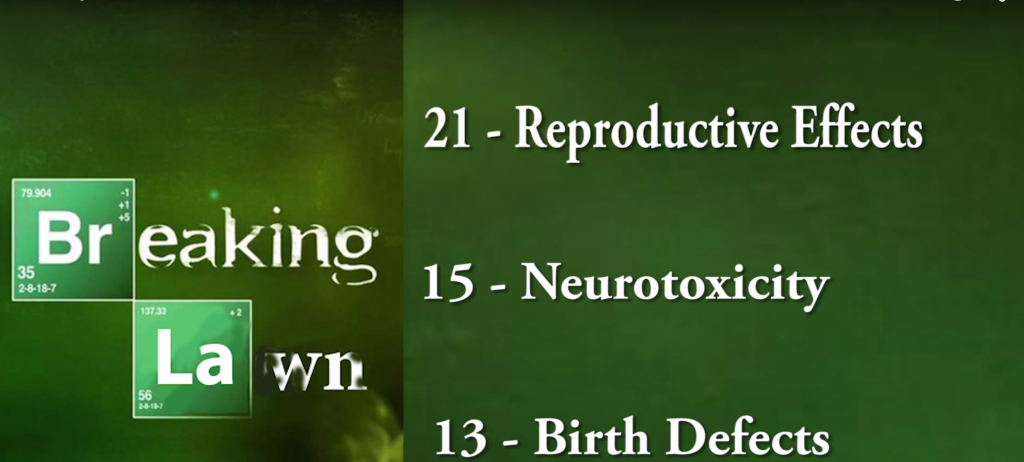Video: ‘Breaking Lawn’ — A Satirical Look at the American Lawn Con

(EnviroNews World News) — EDITOR’S NOTE: At EnviroNews, we’ve been talking about doing a piece on the baffling environmental statistics associated with American lawns for some time now. It’s just one of those things we haven’t gotten around to yet.
But no need to fret with Emmy-award winning environmental journalist and seasoned satirist Charlie Berens on the scene. Berens recently released a video entitled, Breaking Lawn (as in Breaking Bad) — and this six-minute film is sure to have viewers belly-laughing, and shaking their heads with befuddlement at the same time, as the journalist and host of @hollywood drops statistical bombs, sure to make many people think twice about the sparkly green grass patches Americans enjoy everyday.
Berens wrote an article for EnviroNews World News, expanding on the jaw-dropping statistics he exposed in Breaking Lawn. Berens’ article and video is below:
The thing about cutting that much lawn — you spend a lot of time walking in circles.
It was during these hours that I started wondering why someone would even do this? Water, fertilize, spray pesticides — all so the lawn would be healthy enough for the neighborhood kid to mow. Was it all so I could buy Californication? Doubtful.
As the years went on, I kept thinking about why we have lawns. Especially when I had to pull out those pesticide signs before mowing.
“Why pay to kill dandelions?” I thought. “They’re at least ten thousand times less boring than grass, plus you can make wine out of them.”
But killing flowers that can get you drunk is just the start of our nation’s pesticide problem.
From Duke University to the University of Florida, the more research I did on lawns, the more I realized they’re not a great idea. In some parts of the country they may be the worst idea (*cough*
Palm Springs). This is especially true when it comes to water.
According to the Lawn Institute, lawns should be given an inch of water a week.
Using that figure, and taking precipitation into account, NASA researchers estimate
it could take 60 million acre-feet a year to water our lawns.
Now some people go over the watering recommendations, but others stay under the recommendations. Since there’s no definitive study of our actual water use on lawns, let’s just assume we use one tenth of NASA’s best estimate. That conservative estimate still suggests we’d be dumping about two trillion gallons of water on our grass. If I did my long division right, that’s enough to give the 750 million people without access to clean drinking water 7 gallons of water a day.
So why do we still have lawns? Where did they even come from? And most importantly, are there any cheap solutions? Hit the play button and find out.

FILM AND ARTICLE CREDITS
- Charlie Berens - Journalist, Author



